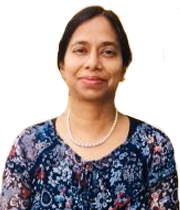IEEE ANTS is a premier IEEE conference on advanced networking and telecommunications topics. IEEEANTS is financially and technically supported by IEEE Communications Society. The distinguishing characteristic of IEEE ANTS is the promotion of an intense dialogue between academia and industry to bridge the gap between academic research, industry initiatives, and governmental policies. This is fostered through panel discussions, keynotes, invited talks, and industry exhibits, where academia is exposed to state-of-the-practice and results from trials and interoperability experiments. The industry, in turn, benefits from exposure to leading-edge research as well as an opportunity to communicate and collaborate with academic researchers regarding practical problems. This year the theme is “ICT for connecting Humanity”. In addition to the myriad of topics mentioned in the list below, technical papers are invited which have special focus on enabling technologies fora hyper-connected world. IEEE ANTS 2020 will be held at IIIT-Delhi, New Delhi, one of the eminent Institute of India. The theme of the conference will foster an environment for deliberating on different research aspects on the said topic. Authors can submit short (4 pages) and regular (max 6 pages) papers that contain original material which is not currently communicated in other conference or journal and has not been previously published. Potential research topics include (but not limited to) following thrust areas.</p
CALL FOR TUTORIAL PROPOSAL
Proposals are solicited from domain experts for Tutorials to be held in conjunction with the main technical program of the 14th IEEE International Conference on Advanced Networks and Telecommunications (IEEE ANTS 2020). The IEEE ANTS 2020 Tutorial Program is intended to disseminate information to conference attendees on current topics directly relevant to the conference theme, networking and communication technologies for realizing the theme “bridge to connect everything” (a list of areas/topics of interest can be found in the Call for Papers). Proposals must provide an in-depth survey of a chosen topic with the option of describing a piece of work in detail and a meaningful summary of open issues in the topic. Proposed tutorials should be comprehensive, informative, and appealing to ANTS 2020 attendees. The selected tutorials will be held on the first day of conference (Dec 14). All tutorials will be featured prominently in the conference program. Each tutorial will be for 3 hours with half hour break. Tutorial instructors must make a commitment to prepare the tutorial materials (e.g., slides) reflecting high quality standards.
Tutorial Proposal Format
The proposal (maximum 5 pages) should concisely and clearly describe the content and objectives of the tutorial, and must include:
1. Title of the tutorial;
2. Abstract, objectives and motivation;
3. Timeliness and intended audience;
4. Name, affiliation, and a short biography of each tutorial speaker;
5. A description of the technical issues that the tutorial will address, emphasizing its timeliness;
6. An outline of the tutorial content, including its tentative schedule;
7. If appropriate, a description of the past/relevant experience of the speaker(s) on the topic of the tutorial;
8. A description of previous tutorial experience of the speaker(s), and past versions of the tutorial;
9. State if a similar tutorial has been offered in any recent conference and how your tutorial differs.
Proposal should be submitted in a single PDF file, not exceeding six pages, for review through EDAS: https://www.edas.info/newPaper.php?c=27510&track=102753
Tutorial Proposal Submission Timelines:
Proposal Deadline: September 30, 2020
Notification of Selection: October 15, 2020
Please direct all IEEE ANTS 2020 tutorial-related questions to the Tutorial Co-Chair:
Prof. Subhankar Dhar, San Jose State University, USA, subhankar.dhar@sjsu.edu ,
Dr. Kaushik Sinha, Southern Illinois University, USA, koushik.sinha@cs.siu.edu ,
Dr. Pravesh Biyani, IIIT-D, praveshb@iiitd.ac.in
List of Tutorials

Title: Machine learning for beyond 5G networks
Speakers: Anubha Gupta, Vimal Bhatia
Abstract:The tutorial will be covered in two parts and introduce attendees to the applications and solutions of Artificial Intelligence/Machine and Deep Learning for the next generation communication systems. In the first part, we will begin with a brief introduction of machine learning and the emergence of deep learning. There would be a brief recap of artificial neural networks and the problems associated with training of deeper neural network architectures.
We will then, discuss deep belief networks, autoencoders, convolutional neural networks, and recurrent neural networks. In the second part, we will briefly look at the recent research literature and applicability of machine and deep learning for beyond 5G communication networks.
 |
 |
| Anubha Gupta | Vimal Bhatia |
Title: Blockchain-powered 5G-IoT Ecosystem vis-`a-vis COVID-19: Opportunities and Challenges
Speakers: Anshuman Kalla (Postdoctoral Visiting Researcher, Centre of Wireless Communications (CWC), University of Oulu, Finland. ), Madhusanka Liyanage
Abstract:The world is going through an unprecedented situation due to the spread of Coronavirus Disease 2019 (COVID-19). To contain the spread of the disease, some of the drastic measures that have been adopted are lockdown, social distancing, restriction on the social gathering, movement restriction, etc. These measures, coupled with the fear and anxiety of getting infected by the disease, have led to adverse effects on our personal as well as professional lifestyle. Despite these strict measures, we are still able to manage and move ahead; thanks to technologies that have provided means and support to fight against COVID-19. In this direction, we believe, powerful mix of technologies like Blockchain, 5G and IoT can play a cardinal role in handling the current (and post COVID-19) situation. Blockchain itself is a powerful mix of technologies that underlies it, whereas, 5G via mMTC has especial focus for IoT and its applications in numerous domains like MIoT, IIoT, smart cities, smart agriculture, etc. What would be interesting is to see how these technologies can fit-in together to mitigate the issues that have come-up during COVID-19 times. Thus, this tutorial will elaborate on the combined role of blockchain, 5G and IoT, the key aspects, numerous use cases in view of COVID-19, and the challenges that need attention by the research community. The tutorial also aims to provide a demonstration on blockchain enabled IoT application using both Ethereum and Hyperledger fabric. We hope this will provide attendees an opportunity to gain some practical exposure.
 |
 |
| Anshuman Kalla | Madhusanka Liyanage |
Title: Quantum Internet for Advanced Networks and Telecommunication Systems
Speakers: Anand M.
Abstract: In the era of advancing ICT, enabling technologies for a secure, hyper-connected world is the need of the hour. With more and more data flowing in the internet, the security of data is paramount. Many nations have started exploring the limits of Quantum Physics to provide them with most robust and secure communication technology. One such emerging field is Quantum Internet. Quantum internet ensures ultimate security for the information exchange and is protected by laws of Physics. Unlike classical internet where data is transmitted in binary bits, Quantum internet transmits data encoded in Quantum bits called Qubit. In this tutorial, the concept of Qubit is introduced, how it can be realised using photon polarisation. Just like how binary digital bits can be manipulated using Binary Logic Gates, Qubits can be manipulated using Quantum Gates. This tutorial will introduce some basic Quantum gates and explain how to build simple Quantum circuits using these Quantum Gates. One such Quantum Circuit is the circuit of Quantum Teleportation where a random Qubit is teleported from Transmitter to Receiver. This circuit is the building block of Quantum Internet. This tutorial will explain the teleportation circuit in detail and how it is the building block of Quantum Internet. Towards the end of the tutorial, the summary will be provided explaining the current implementation and open issues in this new era of Quantum Internet.
 |
| Anand M. |
Title: Intelligent Traffic Management leveraging 5G & Edge Computing
Speakers: Shailesh Prabhu, Ramneek Kalra
Abstract: As a result of urbanization, the traffic density in the roads has drastically increased. Lack of self-discipline in drivers/pedestrians leads to various problems like traffic violations, pedestrians not following lane discipline, traffic congestion, accident reporting, etc. As the traffic condition get worse considering the increase in the number of vehicles every day, there is a critical need for technology to enable an Intelligent Traffic Management (ITM) system to overcome the existing problems.
While there are existing technology solutions to manage the traffic, the current systems lack the mechanism of real-time traffic analysis due to the limited network connectivity. In our tutorial, we bring in the aspect of solving the current traffic problems leveraging Edge Computing. Edge, being natively supported in the 5G architecture, is a potential enabler of real-time traffic analysis close to the sensors, scalability in large deployments and life cycle management of traffic analytics applications. The tutorial also will highlight these abilities through various Edge analytics solutions to different traffic problems. We will also be showcasing prototype implementation results related to real-time traffic violation detection and reporting. Finally, we will give a gist of the current research work in this field and propose resource efficient algorithms to enable real-time traffic analytics.
 |
 |
| Ramneek Kalra | Shailesh Prabhu |


